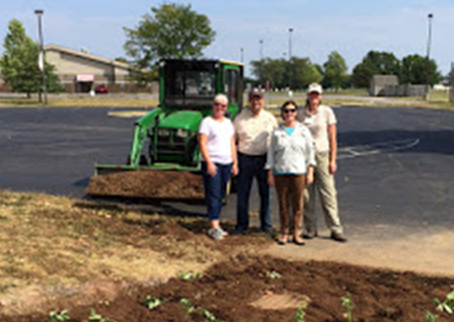
Next summer, a parking lot on an Indiana campus will be a little prettier and a little less likely to flood due to a recently installed rain garden. That rain garden planting capped off a training workshop at Indiana University-Purdue University Columbus (IUPUC).
The Purdue University Extension Rainscaping Education Program team held a two-day intensive workshop September 17-18 for 24 participants from across the state, including Master Gardeners, Soil and Water Conservation District professionals, landscaping contractors, and municipal separate storm sewer system managers.
They learned specifics about rain gardens and other rainscaping techniques, which offer an alternative to standard infrastructure methods for flood prevention and stormwater management. These plantings capture rain water where it lands and slowly absorb it into the soil.
The goal is for workshop participants to take this new knowledge back home to incorporate rainscaping in their community, to engage in public education, and to provide technical assistance. “In Jasper County, participants who attended our previous workshop have held sessions for residents based on our program,” said Kara Salazar, IISG specialist. “Several participants from this workshop have already expressed plans to do the same.”
 The workshop was designed to use flipped class instruction, which means the participants came to class already knowing the ABCs of rain gardens. Before the workshop they had homework, which was to watch seven instructional videos. “This approach really worked,” said Salazar. “We were able to go in depth in our classroom discussions.”
The workshop was designed to use flipped class instruction, which means the participants came to class already knowing the ABCs of rain gardens. Before the workshop they had homework, which was to watch seven instructional videos. “This approach really worked,” said Salazar. “We were able to go in depth in our classroom discussions.”
The workshop included a tour of rain gardens in the area and hands-on experience helping with the installation of the IUPUC rain garden. This garden was an opportunity to also bring in IUPUC students, who participated in the site selection and the planting. They will also work with faculty member Luke Jacobus, rainscaping team member Kris Medic, local Master Gardeners, and the campus maintenance crew to help maintain the garden.
“As we choose a host site for our demonstration gardens, longevity and sustainability are key factors,” said Salazar.

